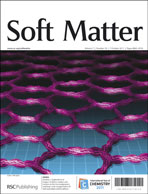Modeling and simulation of polyacrylic acid/protamine nanoparticle precipitation
Abstract
In this study a model for the prediction of polyacrylic acid/protamine nanoparticle precipitation was developed, which constitutes the first numerical approach for modeling the precipitation of organic nanoparticles. Due to the complexity of the process, a spatial resolution (i.e., a simulation via computational fluid dynamics) was not the target. For the description of the precipitation process, population balance equations, accounting for nucleation, growth and aggregation were used and coupled with the engulfment model for mixing. Furthermore, experiments have been carried out by turbulent mixing of precursors in a vortex mixer. Measurements of the resulting particle size distributions and of the final concentrations in the liquid were performed. Finally, by selecting unknown parameters, it was possible to achieve a good agreement of experimental and numerical results. It was found that the formation of the electrostatic surface charge, caused by a layer of protamine on the particle surface, cannot be described instantaneously. Small deviations in the final liquid concentrations and particle size distributions are probably caused by the significant simplifications introduced by the engulfment model and by the description of the solid/liquid equilibrium. However, the presented model may serve as a basis for further development, i.e., by replacing the engulfment model by more sophisticated approaches, e.g., via computational fluid dynamics.


 Please wait while we load your content...
Please wait while we load your content...